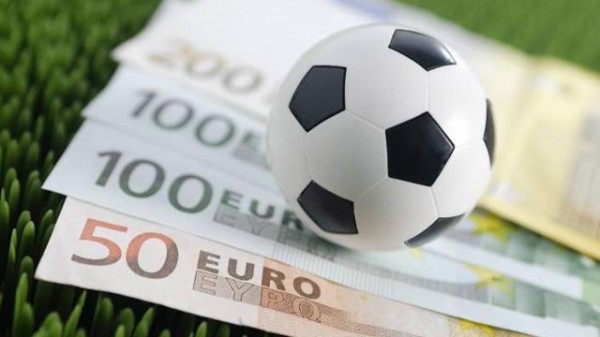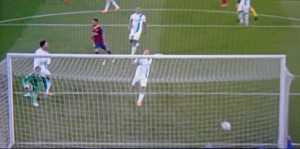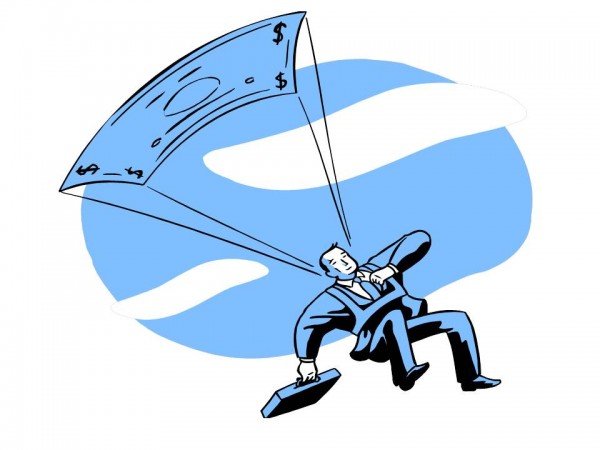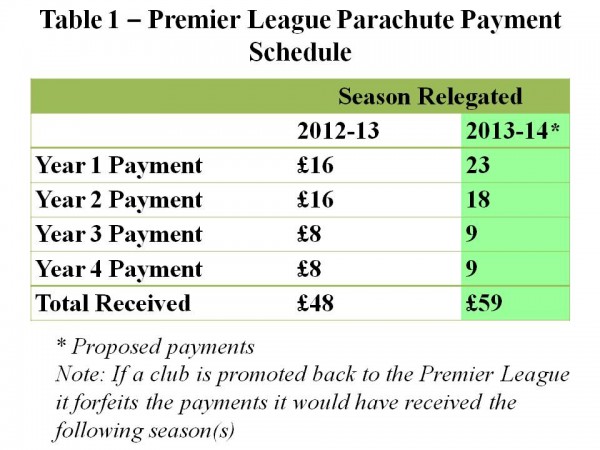 A previous article on this website (Why buy a football club?) focused on the issue of why people buy football clubs. This blog refers to the somewhat strange situation where people who have made large amounts of money from a very successful business career always seem to lose money when they invest in a football team.
A previous article on this website (Why buy a football club?) focused on the issue of why people buy football clubs. This blog refers to the somewhat strange situation where people who have made large amounts of money from a very successful business career always seem to lose money when they invest in a football team.
The Deloitte’s report into football finance found that in the 2012/13 season only half the clubs in the English Premier League (EPL) made an operating profit – profits excluding net transfer expenditure. When the impact of transfer expenditure is included, even fewer clubs make any money. For example, the three teams battling it out for the EPL title this year, Chelsea, Liverpool and Manchester City, reported losses for 2012/13 of £49.4 million, £49.8 million and £51.6m respectively.
What makes the size of these losses even more astonishing is that they have occurred in a period when the revenues earned by the top clubs have increased rapidly. In 2004/05 the combined revenue of the 20 EPL clubs was £1.3billion. By 2011/12 this figure had increased to £2.36 billion.
Given these rapidly rising revenue streams, the main explanation for this poor profit performance is the growth in players’ salaries. It has been estimated that approximately 80% of the increase in revenues generated by the team in the EPL since it began in 1992 have gone to the players in higher wages. In 2011/12 the total wage bill in the EPL was a staggering £1.658 billion, with an average wage bill of £83 million per club. The average weekly wage of a player has doubled over the past six years and is now estimated to be between £25,000 and £30,000 per week.
One deal which recently hit the headlines was that of Wayne Rooney who signed a five-year contract with earnings of up to £300,000 a week or £15.6m annually. However, Mr Rooney is still a long way short of the highest paid sports star. When based on wages and win bonuses, Forbes reported this to be American footballer, Aaron Rodgers, who was paid £25.75m in 2012-13!!!
One major factor that can partly explain this rapid increase in players’ pay is the increased competition for their skills. The potential impact of the transfer system on players’ mobility and wages was discussed in an article on the website in December (Recent challenges to the football transfer system). The career of Tom Finney provides an interesting case study of the impact of the monopsony power that the transfer system and maximum wage used to give the clubs.
Finney was one of the most talented footballers of the 1940s/50s but he played at a time when there was still a maximum wage and a transfer system that was far more restrictive that it is today. He first played in the youth team for Preston North End in 1936 aged 14. Apart for a three-year period between 1942 and 1945 when he served in the army during the Second World War, he remained with Preston for his whole career. He finally retired in 1959 at the age of 38 having scored 210 goals in 473 appearances. He also played in three World Cup final tournaments and scored 30 goals in his 76 international appearances for England.
He also played in three World Cup final tournaments and scored 30 goals in his 76 international appearances for England.
When he died in February of this year many people talked of his loyalty to Preston and the fact that he only earned £20/week when he retired (the maximum wage at the time) and had to supplement his income by working as a plumber. However, interestingly in 1952 an Italian club – Palermo – tried to sign Finney from Preston on a deal which would have paid him a basic weekly wage of £32.25, a bonus of up to £100 per week and a signing on fee of £10,000. At the time he earned the maximum wage of £14 per week with Preston and received a win bonus of up to £2 per week. Palermo also offered him a luxury Mediterranean villa, a brand new sports car and unlimited travel between England and Italy funded by the club. Unsurprisingly, Finney was tempted by the deal and commented that:
There was a genuine appeal about the prospect of trying my luck abroad, not to mention the money and the standard of living.
However, because of the transfer system in place at the time, Preston could block the move. The chairman explained to Finney:
Tom, I’m sorry, but the whole thing is out of the question, absolutely out of the question. We are not interested in selling you and that’s that. Listen to me, if tha’ doesn’t play for Preston then tha’ doesn’t play for anybody.
The club also announced that they would not consider selling Finney for any transfer fee below £50,000. Palermo had offered £30,000 and the transfer record at the time was less that £20,000.
It is highly unlikely that football will ever return to a type of transfer system and maximum wage that gives the clubs the sort of monopsony power they had in Finney’s days. However a new set of policies have been recently agreed and introduced to try to slow down the increase in players’ pay. Financial Fair Play rules set limits on the size of financial losses that clubs can incur over a three-year period. If these rules are broken, then UEFA could prevent the guilty team from entering lucrative competitions such as the Champions League. The EPL also has the power to award points deductions.
With the combined revenues of the 20 EPL clubs forecast to increase by 24% to £3.080 billion in the 2013/14 season, it will be interesting to see how much of this money improves the financial performance of the clubs and how much goes into players’ wages.
Articles
Questions
- Draw a diagram to illustrate the impact of a maximum wage on a perfectly competitive labour market and explain your answer.
- Analyse the impact of the maximum wage on worker surplus, firm surplus and deadweight welfare loss. Draw a diagram to illustrate your answer. Comment on the impact of the maximum price on economic efficiency.
- Draw a diagram to illustrate the impact of a maximum wage on a monopsonistic labour market. Assess its impact on economic efficiency.
- Some authors have argued that the Financial Fair Play regulations are a form of vertical restraint/agreement. What is a vertical restraint?
- Find an example of a vertical restraint in a different industry. What impact will it have on economic welfare?
 Footballers in the English Premier League are some of the most highly paid workers in the world. With unique talents and skills and hence a limited supply of labour, together with an insatiable appetite from the British public for football, we would expect to see high wages and a market ripe for investment, with high returns on offer. But, is this case?
Footballers in the English Premier League are some of the most highly paid workers in the world. With unique talents and skills and hence a limited supply of labour, together with an insatiable appetite from the British public for football, we would expect to see high wages and a market ripe for investment, with high returns on offer. But, is this case?
The article below is by Linda Yueh, the Chief Business Correspondent for BBC News, and she has looked into the football, asking why on earth buy a football club? Despite the success of the English Premier League in drawing fans, TV and commercial revenues, many teams find it difficult to break even and investing in a team is unlikely to yield much of a return (if any!). Yet, we still see successful businesspeople, especially from abroad, purchasing English football teams.
Many club owners have hugely profitable ventures in other markets and historically only invest their money when they see an opportunity for a high return. But, not in the case of football. A return is unlikely and yet they still invest. So, with positive returns unlikely, what is it about this market that attracts investors? The article by Linda Yueh considers this question.
Article
Why on earth buy a football club? BBC News, Linda Yueh (27/2/14)
Report
Annual Review of Football Finance – Highlights Deloitte, Sports Business Group June 2013
Questions
- How can the returns to investment be measured?
- How can a company’s operating profit be calculated?
- Using a labour market diagram, explain why footballers are paid such a high wage.
- Is it monetary or non-monetary factors that seem to explain why businessmen invest in football clubs?
- Why are English football clubs typically unprofitable? Should they be?
- Which factors can explain the growing financial inequality between clubs in the Premier League and in the divisions below? Is there an argument for government involvement to regulate football?
 The English Premier League (EPL) has negotiated a record TV deal which will generate £5.5 billion of revenue over the next 3 years – beginning in the season 2013–14. This represents a 70% increase on the previous deal. Controversy has arisen over some initial proposals put forward by the EPL as to how the money will be spent. The owners of the clubs in the Championship of the English Football League (EFL) are particularly concerned about the size of the proposed payments to the three teams relegated from the EPL.
The English Premier League (EPL) has negotiated a record TV deal which will generate £5.5 billion of revenue over the next 3 years – beginning in the season 2013–14. This represents a 70% increase on the previous deal. Controversy has arisen over some initial proposals put forward by the EPL as to how the money will be spent. The owners of the clubs in the Championship of the English Football League (EFL) are particularly concerned about the size of the proposed payments to the three teams relegated from the EPL.
Some 30 years ago the money generated from the sale of television rights was equally shared between all the teams in the then four divisions of the English Football League (EFL). In 1992 the top division of the English Football League broke away and formed the English Premier League (EPL). This newly formed EPL negotiated a separate television deal and kept the majority of the money. However, some payments were and still are made to the teams in the EFL and to organisations such as the League Managers Association and Professional Footballers Association. For example in 2011-–12 the EPL donated £189.4 million of the £1.2 billion generated from that year’s TV deal.
The majority of the money donated by the EPL is spent in two main ways. First, some money is redistributed to all the teams in the EFL: i.e. The Championship, League 1 and League 2. These are known as ‘solidarity payments’ and in 2011–12 the EPL spent £49.8 million on this scheme. Each club in the Championship received £2.3 million. It has been proposed that the amount paid into this scheme should be increased by 5% in the season 2013–14. Second, a relatively large amount of money is paid over a four-year period to the three teams relegated each season from the EPL into the Championship. These are known as ‘parachute payments’ and in the season 2011–12 the EPL spent £90.9 million on this scheme. The rationale for having parachute payments is to help the relegated teams adjust their wage bills to the much lower revenue streams that come from playing in the Championship. Proposed changes to the scheme are outlined in Table 1.
 The chairmen of the football league clubs met on the 20th March 2013 and a number of them expressed concerns about the relatively large increase in the parachute payments compared to the solidarity payments. They were particularly concerned that the changes to the funding would damage the competitive balance of the Championship.
The chairmen of the football league clubs met on the 20th March 2013 and a number of them expressed concerns about the relatively large increase in the parachute payments compared to the solidarity payments. They were particularly concerned that the changes to the funding would damage the competitive balance of the Championship.
Competitive balance refers to how the most talented players are distributed amongst the teams in a league. For example, are the majority of the most talented footballers playing for just a couple of the teams? In this case the league is competitively imbalanced and the teams with the best players will tend to win far more games than the other teams. The outcome of the league will be very predictable. If the most talented players were more evenly spread across all the teams in the league, then it would be more competitively balanced. Matches and the outcome of the league would become more unpredictable.
Does the level of competitive balance matter? Some sports economists have argued that it may have a significant impact on the success of the league. This is because fans may value the unpredictability of the results. It follows that closer and more unpredictable results will generate higher match-day attendances and increase the revenues of the clubs.
This is an interesting argument and is the opposite of what economic theory would predict for most markets. For example, the standard prediction would be that as firms outperform their rivals, they generate more revenue and profit. If they manage to drive all their rivals out of business, they would become a pure monopoly and make large abnormal profits. However in professional team sports the outcome may differ significantly. If the unpredictability of the league is highly valued by fans, then teams will generate more revenue when they have strong and evenly matched rivals.
It has been reported that further discussions about the distribution of the money will take place this month with the owners of the championship clubs arguing that there should be smaller increases in parachute payments and much larger increases in solidarity payments. Representatives of the EPL have argued that the parachute payments do not distort competition and make the championship predictable. They point out that at present only one of the top six teams in the championship (Hull) receives parachute payments, while only one of the teams promoted from the Championship in the season 2012–13 (West Ham) received these payments.
Articles
Premier League warned over rich and poor split in wake of TV deal The Guardian, Owen Gibson (19/3/13)
Championship clubs angered by Premier League parachute boost Daily Mail, Charles Sale (6/2/13)
Football league is to lessen the advantage of parachute payments The Guardian, Owen Gibson (20/3/13)
Championship clubs warn Premier League over hike in parachute payments for relegated teams The Independent, Majid Mohamed (20/3/13)
Increased parachute payments could lead to a salary cap in the Championship The Post, A. Stockhausen (21/3/13)
Scudamore:Parachute payment system fair Eurosport, Andy Eckardt (22/3/13)
Parachute payments more than a softened landing The Daisy Cutter, Richard Brook (21/3/13)
Questions
- What factors will influence the size of the attendance at a football match?
- To what extent do you think that the money generated from the sale of television rights should be equally shared between all the clubs in the English Premier League and the English Football League
- Can you think of any ways of measuring the competitive balance of a football league?
- Explain why a very competitively imbalanced league may reduce the revenue for all the clubs in that league?.
- In traditional economic theory it is assumed that firms aim to maximise their profits. What do you think is the objective of a typical football club in the English Premier League?
Demand and supply determine prices, but when it comes to factors of production, such as labour, their ‘price’ is largely influenced by their productivity. This helps to explain why doctors are paid more than cleaners and Premiership footballers more than amateurs. But, can it really explain a £50 million transfer price for Fernando Torres, as he moves from Liverpool to Chelsea? Undoubtedly he’s a good footballer, but are his skills worth the price paid? The same question can be asked about David Luiz – a price of £25 million; Andy Carroll – a price of £36 million and a bargain price for Luis Suarez – a mere £23 million! How can teams, such as Chelsea afford to spend so much money, despite making a loss of £70.9 million in the year to June 2010? How much would they have lost had they not won the Premier league and the FA cup?
With the country facing the possibility of returning to recession and the trouble that Portsmouth FC found itself in last season, UEFA’s ‘financial fair play’ rules seemed like a good idea. But, they appear to have been thrown out the window. £200 million was spent on a handful of footballers, as libraries across the UK are shut down due to a lack of funds. The Premier League in the UK generated a higher income than any other, equal to £2.3 billion. However, 14 of our clubs made substantial losses. The amount owed to banks or the owners backing these clubs came in at a mere £3 billion. As the big clubs in the UK push up the prices, more and more ‘small’ clubs are being competed out of the market.
 Torres makes record move from Liverpool to ChelseaBBC Sport(31/1/11)
Torres makes record move from Liverpool to ChelseaBBC Sport(31/1/11)
Chelsea and Liverpool drive astonishing £134 million manic Monday Telegraph, Jason Burt (1/2/11)
Champions Chelsea report £70.9 million loss BBC News (31/1/11)
Chelsea announces 70.9 million pound annual loss despite winning Premier League and FA Cup The Canadian Press, Stuart Condie (1/2/11)
Financial restraint goes out of the window when the big clubs struggle Guardian, David Conn (1/2/11)
Questions
- How are the prices of footballers determined? Use a diagram to illustrate your answer.
- What factors explain why Premier League footballers are paid so much more than those in the Conference?
- What type of market structure is the UK football league?
- As prices are bid upwards, is there an argument that smaller clubs are being competed out of the transfer market? What type of market structure is football becoming?
- How is that Chelsea can make £70 million loss but still have the finance to spend £50 million on new players?
- What policies could be used to ensure lower prices are paid for footballers? Would they be effective and are they needed?
The most popular sport in the world: football. What else?! Huge games and salaries to match. But is it really as glamorous as we think? We may see some top players receiving a salary per week that most people can’t hope to come close to in a year, but players at Portsmouth have had to go without their wages on three occasions, as the club entered financial strife. It is these high salaries that prevent many clubs from breaking even, let alone making a profit. Whilst a lack of salary to footballers is a rare occurence, the football industry isn’t the money-churning machine that it appears to be.
We’re used to seeing full stadia and fans decked out in their club’s regalia, so surely football clubs are awash with money? But things aren’t so rosy. Research published by the Centre for the International Business of Sport at Coventry University in 2008 revealed that clubs in the top four tiers of English football between the 2001/2 and 2005/6 seasons made an aggregated loss of more than £1bn. In addition, 56 clubs in the English leagues went bankrupt between the Insolvency Act’s introduction in 1986 and June 2008.
We’ve seen a number of buyouts of clubs in recent years by extremely wealthy families. The Glazer family bought Manchester United in 2005, yet this buyout and many others are heavily leveraged and servicing their debts is now proving a problem. Whilst some clubs publish annual profits, it doesn’t mean they are without debt. Manchester United, defending champions of the English football league, earned profits of £48.2 million in the 2008/9 season, but its debts are estimated at around £700 million. The club received a loan of £509.5 million and had to pay £41.9 million in interest.
The owners of Chelsea and Manchester City have recently converted £340 million and £304.9 million of loans into equity respectively. Financiers, however, say this is simply “moving money from their left pocket to the right”. Manchester City reported a massive loss of £92.6 million for the 2008/9 financial year. Unfortunately for them, these figures ignore outlays since May 2009 for Carlos Tevez, Kolo Toure and Emmanuel Adebayor. Portsmouth’s £7 million share of TV revenue has been diverted directly to other clubs to whom they owe money for transfers.
So, how much of a money-maker is football? Well stadia are still full and it’s certainly growing in popularity in Asia. Premier teams are now appreciating how much money can be made out there by selling television rights. However, in 2008 the FA chairman Lord Triesman still estimated that English football debts stood at £3bn. With all this debt, are there any positives? Just one – at least it’s less than the UK’s public debt!
Abu-Dhabi family reduce debt for Manchester City Campden FB (7/1/10)
Manchester City post massive loss BBC News (6/1/10)
What a waste of money – the Premier League’s best paid flops Guardian, Jamie Jackson (10/1/10)
Portsmouth players still not paid as Premier League expresses concern at crisis Telegraph, Paul Kelso (6/1/10)
Paying by the rules The Lawyer, Adam Plainer (11/1/10)
Jacob unimpressed by fan protests Press Association (11/1/09)
Cardiff City to face winding up order BBC Sport (8/1/10)
Debt swap is ‘window dressing’ The Independent, Nick Clark (7/1/10)
Manchester United aim to raise £500m in bond sale in bid to reduce mounting debt Telegraph, Mark Ogden (11/1/10)
Chelsea debt wiped off by Roman Abramovich but club still record loss Telegraph (30/12/09)
Manchester United to raise £500m BBC News (11/1/10)
Cristiano Ronaldo saves Man-Utd – Again Sky News (11/1/10)
Tony Fernandes and David Sullivan vie for control of West Ham Telegraph, Jason Burt (16/1/10)
One thing at Manchester United isn’t going downhill – their debt Guardian, David Conn (6/1/10)
Premier League looks to cash in on Asia BBC News, Guy de Launey (29/12/09)
Questions
- Why do footballers receive such high wages? Illustrate why wages in the Premier League are so much higher than those received by players in non-league teams. What’s the key factor?
- What is debt swapping?
- In the Independent article: ‘Dept swap is Window dressing’, what does it mean by (a) window dressing and (b) debt swap is ‘moving money from their left pocket to the right’?
- How can a club such as Manchester United record a profit, but have substantial debts?
- What is leveraging and why is it a problem for some football teams?
- How will an issue of bonds enable a football club to refinance its debt?
- What opportunities does Asia present to English football?
 A previous article on this website (Why buy a football club?) focused on the issue of why people buy football clubs. This blog refers to the somewhat strange situation where people who have made large amounts of money from a very successful business career always seem to lose money when they invest in a football team.
A previous article on this website (Why buy a football club?) focused on the issue of why people buy football clubs. This blog refers to the somewhat strange situation where people who have made large amounts of money from a very successful business career always seem to lose money when they invest in a football team. He also played in three World Cup final tournaments and scored 30 goals in his 76 international appearances for England.
He also played in three World Cup final tournaments and scored 30 goals in his 76 international appearances for England.


